A delicious homemade noodle dish with an ultra-flavorful sauce
Today we’re diving into another variation of Sichuan noodles. From dan dan noodles to glutamate noodles, the versions are endless (even if the differences can be subtle)!
In this article I introduce you to Tián shuǐ miàn (甜水面), or “sweet water noodles” — literally, noodles in sweet water. Beneath the plain name is a sauce that is just as simple to put together yet, thanks to its ingredients, delivers a surprisingly layered, satisfying flavor.
And then there are the noodles themselves… distant cousins of udon (or, considering the history of Japanese cuisine, perhaps their ancestor), they are thick, long, and pure joy to slurp. You can swap in udon in a pinch, but the homemade version is divine. Their traditional name is gungunmian (棍棍面), or “stick noodles”.
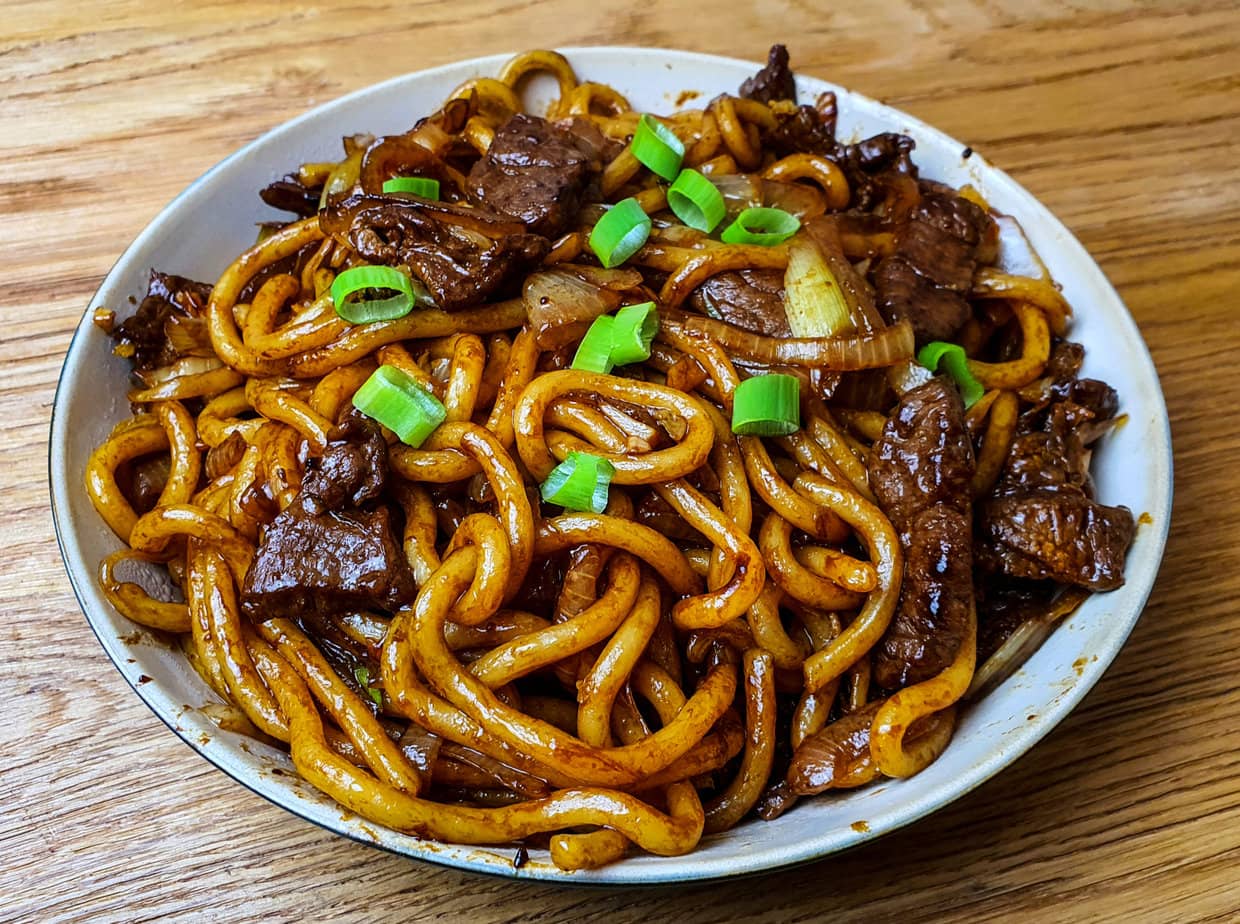
Origins of Tián shuǐ miàn
Sweet water noodles trace their roots to Chengdu, the capital of Sichuan Province in China. Their earliest written record dates to 1910, when historian and writer Fu Chongju mentioned the dish in his biji, Chengdu Tonglan.
He wrote that the noodles were served early each morning, mostly to laborers, at the modest price of 6 Wen per bowl, while wealthier patrons paid 16 Wen.
Yet Fu Chongju was hardly impressed; he called them thick and bland. The comment may be harsh, but it is also one of the first written notes on this now iconic dish, showing that sweet water noodles had not yet evolved into the flavorful bowl we know today.
Tián shuǐ miàn earned their current light sweetness and clean profile only after decades of tweaks, especially the arrival of glutamate and the culinary shifts that followed the post-Mao reforms.
The main ingredients of Tián shuǐ miàn
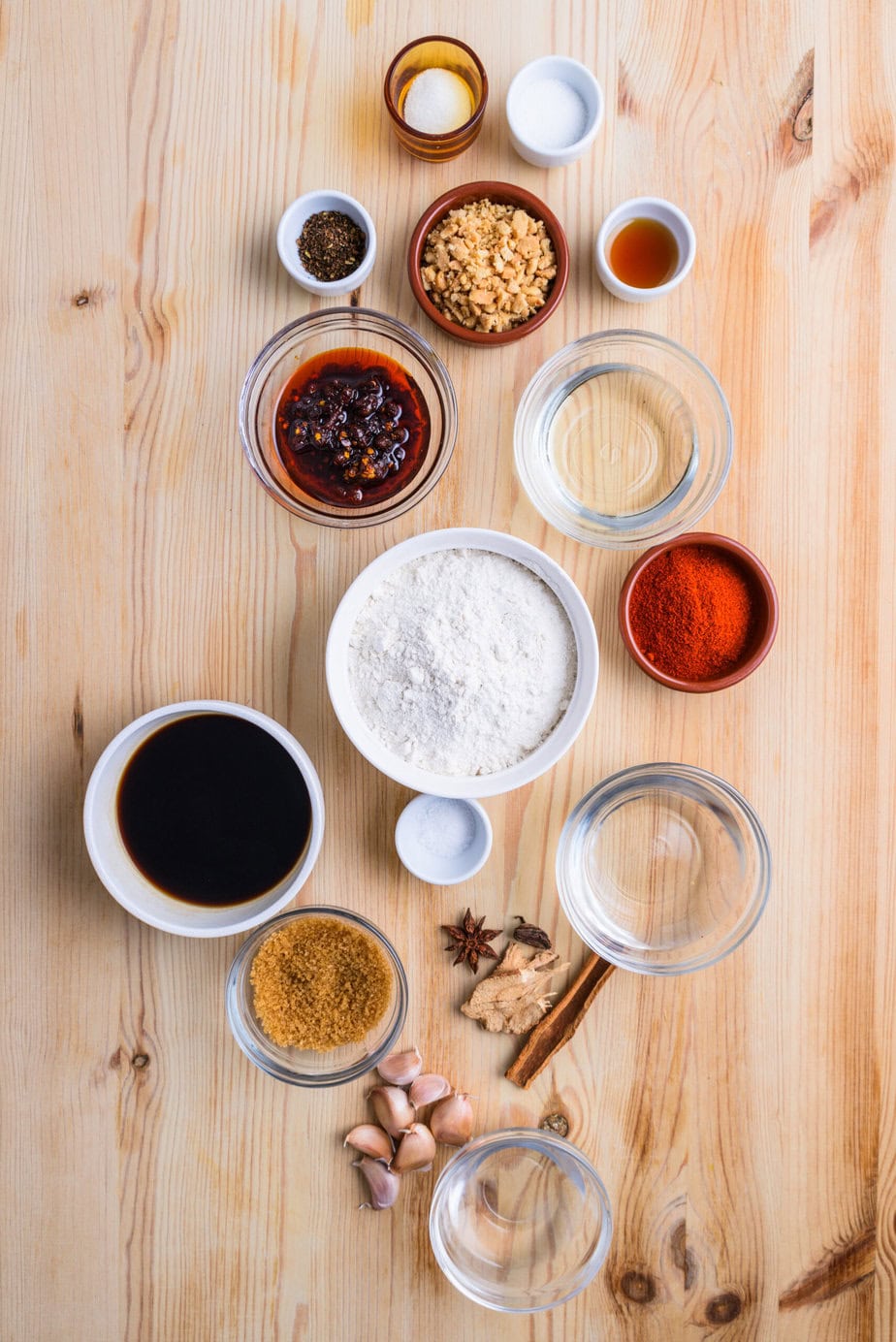
Wheat flour: Ideally choose Italian 00 flour with a high gluten content, or use bread flour.
The noodles: homemade is best, but udon works in a pinch
Chinese cardamom: also called black cardamom, it adds a distinct smoky note to the sauce. You can swap in Indian black cardamom, though the flavor is less refined
Chili oil: here we use two chili oils: a jarred Lao Gan Ma and a quick homemade version included below. For full authenticity, you can replace both with Sichuan chili oil
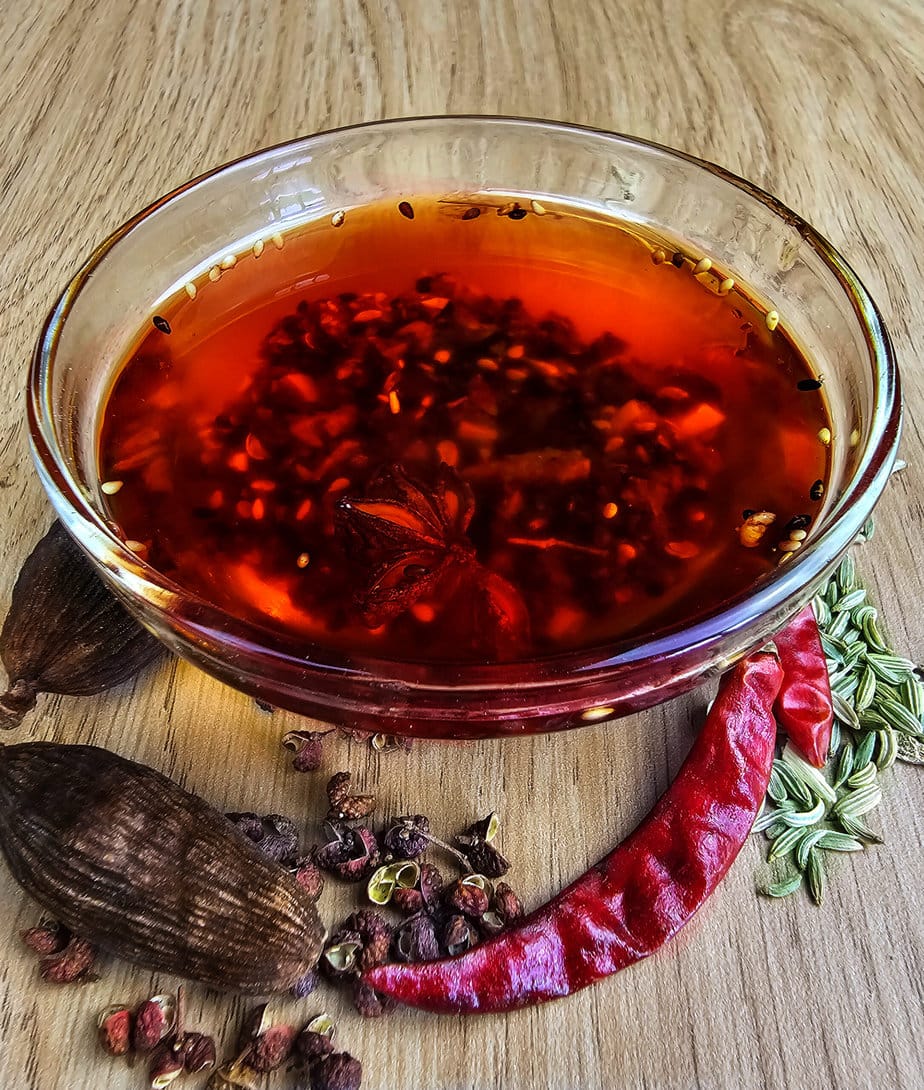
The glutamate: Some diners shy away from this seasoning — you can omit it, but, as with fried-garlic noodles, it delivers a huge hit of umami
Culinary sources
For this article I leaned on the excellent recipe from the YouTube channel “Chinese Cooking Demystified”

Sichuan Sweet Water-Noodles – Tiánshuǐ Miàn
Ingredients
Handmade Noodles
- 200 g high-gluten flour e.g., Italian 00 flour
- 4 g salt
- 100 g water
- 1 tablespoon neutral oil for coating the noodles
Sweet Soy Syrup
- 100 g light soy sauce
- 25 g brown sugar
- 1 star anise
- 2 pieces dried ginger
- 0.5 stick cinnamon
- 1 Chinese black cardamom
Garlic Water
- 7 cloves garlic
- 3 tablespoons water cold
Quick Chili Oil
- 2 tablespoons red chili powder
- 55 ml neutral oil
- 55 ml Lao Gan Ma chili oil
Assembly
- 400 g noodles cooked
- 8 tablespoons chili oil homemade, prepared above
- 2 tablespoon sweet soy syrup prepared earlier
- 2 tablespoon garlic water paste and liquid
- 8 teaspoons peanuts crushed
- 1 teaspoon sesame oil
- 1 teaspoon Sichuan pepper powder
- 1 teaspoon sugar
- 1 teaspoon MSG
Instructions
Handmade Noodles
- In a mixing bowl, combine the flour and salt.200 g high-gluten flour, 4 g salt

- Drizzle in the water a little at a time, stirring continuously with chopsticks.100 g water

- When the dough looks shaggy, press it together into a rough ball.
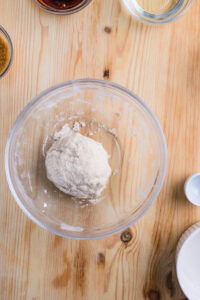
- Knead on the counter for 2–3 minutes.

- Return the dough to the bowl, cover, and let it rest for 15 minutes.
- Knead for another 1–2 minutes.
- Move the dough to the work surface, pat it into a rough rectangle, then fold it in half.
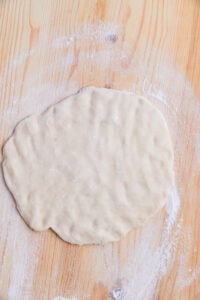
- Flatten and fold again, repeating the process six times.

- After the final fold, place the dough back in the bowl, cover, and rest 15 minutes more.

- Repeat the knead-fold-rest cycle once more (knead 1–2 minutes, fold 6–7 times, rest 15 minutes).
- Dust the counter with flour and roll the dough into a 0.5-cm-thick sheet.

- Cut the sheet into 0.5-cm-wide strips to form rectangular noodle ‘sticks.’
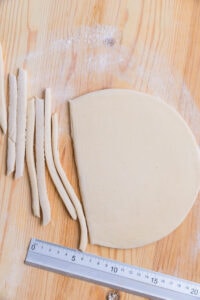
- Gently separate and stretch the strips as you go.
- Lightly dust the noodles with flour once they’re all cut.
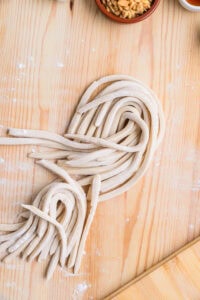
- Cook the noodles in batches, slipping them gently into a pot of boiling water.
- Give them a gentle stir with chopsticks to keep them from sticking.
- When the water returns to a full boil, splash in a cup of cold water (as you would for wontons).
- Bring back to a boil once more, then drain the noodles.
- Transfer the noodles to a bowl and toss with a little oil.1 tablespoon neutral oil
Sweet Soy Syrup
- Combine all the ingredients in a small saucepan.100 g light soy sauce, 25 g brown sugar, 1 star anise, 2 pieces dried ginger, 0.5 stick cinnamon, 1 Chinese black cardamom

- Warm over low heat until the sugar dissolves, then cover.
- Simmer gently for about 15 minutes, until big bubbles appear and the syrup coats the back of a spoon.
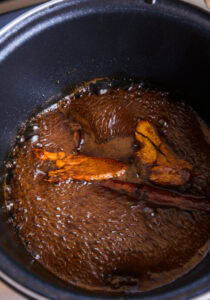
Garlic Water
- Lightly crush the garlic cloves and peel them.7 cloves garlic

- Pound the garlic to a coarse paste in a mortar.
- Stir in the cold water.3 tablespoons water
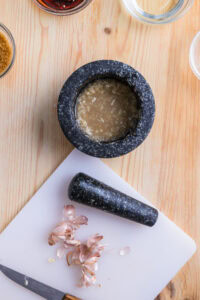
Quick Chili Oil
- Put the chili powder in a heatproof bowl.2 tablespoons red chili powder
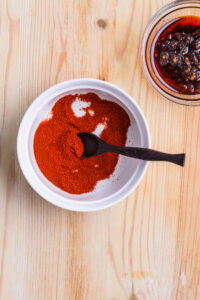
- Heat the oil to about 190 °C, just until wisps of smoke appear.55 ml neutral oil

- Carefully pour the hot oil over the chili powder and stir.
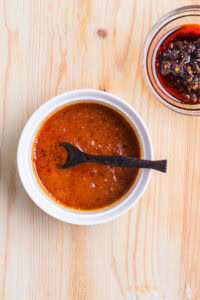
- Stir in the Lao Gan Ma.55 ml Lao Gan Ma chili oil
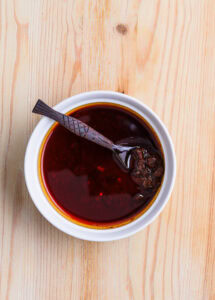
Assembly
- Combine all ingredients listed under “Assembly” using the per-bowl amounts above, then toss thoroughly.400 g noodles, 8 tablespoons chili oil, 2 tablespoon sweet soy syrup, 2 tablespoon garlic water, 8 teaspoons peanuts, 1 teaspoon sesame oil, 1 teaspoon Sichuan pepper powder, 1 teaspoon sugar, 1 teaspoon MSG
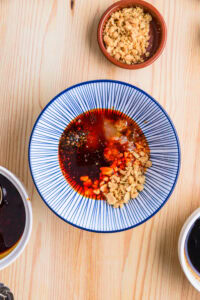
Notes
- 200 g cooked noodles
- 4 Tbsp homemade chili oil
- 1 Tbsp sweet soy syrup
- 1 Tbsp garlic water (paste and liquid)
- 4 tsp crushed peanuts
- ½ tsp toasted sesame oil
- ½ tsp ground Sichuan pepper
- ½ tsp sugar
- ½ tsp MSG

